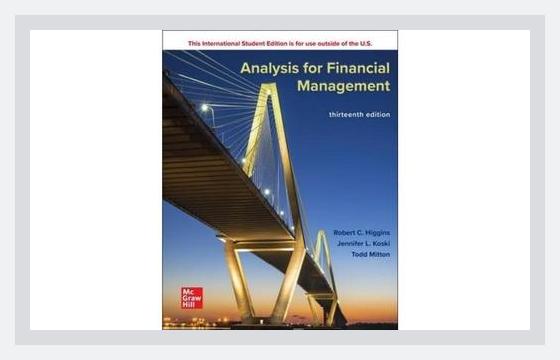Finance and AccountingBudgeting and ForecastingFinancial Analysis
**
Introduction
“Analysis for Financial Management” by Robert C. Higgins is a practical guide focused on core financial management principles, dealing heavily with budgeting, forecasting, and financial analysis. It’s designed for a wide range of readers, from students to financial professionals, providing actionable insights for effective financial decision-making.
1. Understanding Financial Statements
Higgins begins with an emphasis on the fundamental tools for financial analysis: financial statements. These are the income statement, balance sheet, and cash flow statement.
- Income Statement:
- Key Point: It summarizes revenues, expenses, and profits over a period.
-
Action: Regularly review income statements to understand revenue streams and cost structures. For instance, if you notice rising operational costs, consider cost-cutting strategies.
-
Balance Sheet:
- Key Point: It provides a snapshot of a company’s financial position at a specific point in time, showing assets, liabilities, and shareholders’ equity.
-
Action: Check the balance sheet to gauge liquidity (current ratio) and leverage (debt-to-equity). If your debt levels are high, plan to increase equity to balance your financial structure.
-
Cash Flow Statement:
- Key Point: It tracks the cash inflows and outflows from operating, investing, and financing activities.
- Action: Monitor the cash flow statement to ensure sufficient cash for day-to-day operations. For example, if operating cash flow is consistently negative, investigate improving receivables collection or reducing overdue payables.
2. Financial Ratio Analysis
Ratios are critical to understanding financial health and operational efficiency. Higgins categorizes ratios into profitability, efficiency, liquidity, and leverage.
- Profitability Ratios:
- Key Example: Return on Equity (ROE) measures the return generated on shareholders’ equity.
-
Action: Use ROE to assess whether your equity investments are yielding satisfactory returns. If ROE is low, evaluate your business strategy or operational efficiencies.
-
Efficiency Ratios:
- Key Example: Inventory Turnover Ratio illustrates how quickly inventory is sold.
-
Action: Aim to optimize inventory turnover. A slow turnover suggests overstocking or obsolescence, while an excessively fast turnover might indicate issues like stockouts.
-
Liquidity Ratios:
- Key Example: Current Ratio (Current Assets / Current Liabilities) indicates the ability to cover short-term obligations.
-
Action: Maintain a current ratio above 1 to ensure liquidity. If your ratio is too low, consider restructuring short-term debts or converting non-liquid assets into cash.
-
Leverage Ratios:
- Key Example: Debt-to-Equity Ratio reflects the degree to which a company is financing its operations through debt versus wholly-owned funds.
- Action: Keep the debt-to-equity ratio at manageable levels to avoid excessive interest burdens. If currently high, strategize debt reduction or equity financing options.
3. Cash Flow Forecasting
Forecasting future cash flows is vital for planning and maintaining solvency.
- Key Example: Higgins discusses creating a cash budget that estimates future cash inflows and outflows.
- Action: Develop a rolling three-month cash forecast to anticipate cash shortages and surpluses. Regularly update it based on the latest financial data and trends.
4. Budgeting and Financial Planning
Budgeting involves planning future revenues and expenses to control finances.
- Key Example: Higgins describes the importance of zero-based budgeting, where every expense must be justified.
- Action: Implement zero-based budgeting to eliminate unnecessary expenses. Re-evaluate the budget annually, questioning the necessity and efficiency of each cost.
5. Valuation and Capital Budgeting
Understanding a project or an investment’s value is essential for making informed decisions.
- Key Example: Higgins explains Net Present Value (NPV) and Internal Rate of Return (IRR) as tools to evaluate investment opportunities.
- Action: Use NPV and IRR for capital budgeting. For example, calculate the NPV of a potential project to determine its profitability. Only undertake projects where NPV is positive.
6. Risk Management
Identifying and managing financial risks ensures long-term stability.
- Key Example: Higgins outlines the use of sensitivity analysis to assess financial risks.
- Action: Conduct sensitivity analysis on major financial projections. For example, analyze how changes in interest rates or sales volumes impact profit margins, and develop strategies to mitigate these risks.
7. Financing and Capital Structure
Choosing the right mix of debt and equity financing is crucial.
- Key Example: Higgins discusses the Modigliani-Miller theorem, which, under certain conditions, suggests that the value of a firm is unaffected by its capital structure.
- Action: Analyze the cost of debt versus equity to determine the optimal capital structure. Use cost-benefit analysis to decide on the proportion of debt and equity that minimizes the weighted average cost of capital (WACC).
8. Dividend Policy
Higgins tackles dividend policy and its implication on shareholder value.
- Key Example: The book discusses the residual dividend theory, where dividends are based on earnings left after all suitable investment opportunities are funded.
- Action: Implement a residual dividend policy. Pay dividends from residual earnings after funding all profitable investment projects, ensuring optimal growth and shareholder wealth maximization.
9. Performance Measurement and Incentives
Effective performance measurement aligns management actions with shareholder interests.
- Key Example: Economic Value Added (EVA) is depicted as a metric to measure a company’s true economic profit.
- Action: Adopt EVA to evaluate performance. Use it to set performance targets and managerial incentives, ensuring actions are geared towards value creation.
10. Mergers and Acquisitions (M&A)
M&A can be powerful strategies for growth and value creation.
- Key Example: Higgins highlights the importance of due diligence in M&A.
- Action: Conduct thorough due diligence before pursuing M&A deals. Examine the financial health, market position, and potential synergies of the target company to make informed decisions.
Conclusion
“Analysis for Financial Management” by Robert C. Higgins serves as a comprehensive guide for understanding and applying financial management principles. It emphasizes analyzing financial statements, conducting ratio analysis, forecasting cash flows, budgeting, valuing projects, managing risks, optimizing capital structure, setting dividend policies, measuring performance, and executing mergers and acquisitions. By incorporating these strategies, both budding and experienced financial managers can enhance their decision-making capabilities, thereby driving their organizations towards financial health and growth.
Finance and AccountingBudgeting and ForecastingFinancial Analysis
